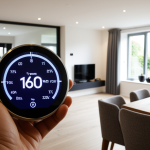Essential Considerations for UK Outdoor Playground Design
Designing an outdoor playground in the UK requires careful attention to factors like location, space, and the unique British climate. The often wet and changeable weather means materials and equipment must be chosen to withstand rain, cold, and occasional frost. Effective playground planning starts with assessing the garden or community area size to balance creativity with practical use.
Adapting designs to British gardens often involves combining imaginative play features with durability. For example, using weather-resistant wood and metal in structures helps them endure harsh conditions without sacrificing fun. Additionally, incorporating damp-proof surfacing and drainage ensures safe play throughout the year.
This might interest you : Revamp your kent bathroom: expert tips and techniques to banish hard water stains from tiles
Community and family input plays a vital role in successful playground design. Gathering insights from local parents and children supports creating spaces that truly meet users’ needs and encourages ownership. This collaboration often leads to diverse play zones that appeal to various age groups and abilities, respecting space constraints while maintaining excitement and inclusivity.
Ultimately, good playground planning in the UK fuses climate resilience with user-focused design. This approach leads to outdoor playgrounds that are both inspiring and practical, inviting children to explore and enjoy safely regardless of season.
Also to read : Revamp your uk space: discover eco-friendly decor innovations and green living solutions!
Innovative Playground Features for Children
Incorporating creative playground ideas strengthens the appeal and usability of an outdoor playground UK-wide. Designing age-appropriate zones ensures children at various developmental stages engage safely and enjoyably. For example, separate areas for toddlers and older kids can balance excitement with suitable challenge levels.
Themed playground areas spark imagination while promoting diverse play styles. Integrating sensory play equipment — such as tactile panels, water features, or musical elements — stimulates the senses and supports developmental skills. These features benefit children of all abilities, making the playground more engaging.
Using natural materials like timber, stone, and recycled components aligns with eco-friendly concepts. This not only enhances the tactile experience but also harmonises the playground with its surroundings, offering a calming atmosphere that encourages exploration.
Creating inclusive play environments is essential. Accessible ramps, low-level equipment, and clear pathways help children with mobility challenges participate fully. This inclusive design fosters social interaction and supports diverse learning needs within the community, making playground planning more thoughtful and impactful.
Essential Considerations for UK Outdoor Playground Design
Successful playground planning in the UK hinges on carefully balancing creativity with practical limitations posed by space and climate. The outdoor playground UK designs must primarily address variable weather—rain, frost, and wind—by selecting materials and layouts suited to harsh conditions. For instance, positioning equipment to avoid water pooling or excessive wind exposure enhances usability.
Location within gardens or community spaces determines how much room can be dedicated to play structures versus open areas for running or socialising. Designers often face the challenge of maximising engaging play elements without overcrowding limited spaces. Thoughtful zoning helps carve out distinct play areas while maintaining clear pathways for safety.
Community involvement is key. Parents and local residents provide invaluable feedback on safety concerns and desired features, ensuring the playground meets the needs of its users. Incorporating this input fosters a sense of ownership and can highlight specific local conditions or preferences important for design inspiration.
Ultimately, integrating climate adaptation, spatial constraints, and community perspectives results in outdoor playground UK projects that are both durable and delightful, encouraging children’s exploration all year round.
Essential Considerations for UK Outdoor Playground Design
Choosing the right location is critical for successful playground planning in the UK. Site assessment should focus on ground drainage, sunlight exposure, and wind shelter to maximise usability despite the region’s variable weather. For instance, placing equipment away from waterlogged areas prevents damage and enhances safety.
Space constraints typical in British gardens demand a clever balance between imaginative elements and practical use. Designers achieve this by zoning play areas for different activities, ensuring paths remain clear, and avoiding overcrowding. This approach allows for diverse play opportunities while maintaining safety.
Adapting to the UK climate means selecting weather-resistant materials that resist decay and require minimal upkeep. Timber treated for damp conditions and coated metals are popular choices, combining durability with aesthetic appeal.
Community and family input enriches the design process, allowing firsthand knowledge of local needs. Engaging with residents uncovers preferences and safety concerns, which inform layouts and equipment selection. This collaborative effort transforms a simple playground into a cherished community asset, reflecting both creativity and functionality.
Recommended Playground Equipment and Materials
Choosing the right playground equipment UK involves matching structures to children’s developmental needs while ensuring safety and durability. For toddlers, low-level climbing frames and interactive panels encourage exploration without risk. Older children benefit from more challenging apparatus like rope ladders or balance beams that foster physical skills.
Materials must withstand the UK’s wet climate. Weather-resistant materials such as treated timber and galvanised steel resist decay and corrosion, extending the playground’s lifespan. Rubber-coated surfaces and powder-coated metals also provide protection against dampness, reducing maintenance needs.
Safe playground structures require experts’ guidance. Brands with proven safety records ensure compliance with UK standards and offer designs tested for stability and injury prevention. Selecting equipment with rounded edges, non-toxic finishes, and sturdy anchoring improves overall safety.
Incorporating a mix of tactile and physical play elements supports diverse learning styles and physical development. For example, combining climbing frames with sensory play equipment enriches playtime experiences while maintaining practical upkeep—key to successful playground planning across the UK.
Essential Considerations for UK Outdoor Playground Design
Designing an outdoor playground UK requires prioritising location, space, and crucial adaptation to the UK climate. Selecting a site with good drainage and shelter from prevailing winds prevents waterlogging and damage, extending the playground’s usability throughout the year. Adjusting to limited space in typical British gardens means clever playground planning that balances imaginative elements with practical safety. This often involves zoning distinct areas for varied play activities while maintaining open paths for supervision and access.
Balancing creativity and durability is key. Use of weather-resistant materials aligns with the climate, while thoughtful layouts minimise maintenance and ensure longevity. Community and family input during design stages is invaluable—they provide design inspiration rooted in real needs and preferences. Engaging local parents and children helps tailor the playground to the specific user group, encouraging ownership and inclusivity.
In summary, successful outdoor playground UK design harmonises environmental challenges, spatial constraints, and user engagement. This approach results in functional, attractive spaces where children can explore freely and safely, reflecting both practical and creative goals.
Essential Considerations for UK Outdoor Playground Design
Designing an outdoor playground UK involves meticulous planning to address location, space, and weather challenges unique to the region. Selecting a site with reliable drainage and shelter from prevailing winds helps avoid waterlogging and extends equipment longevity. For instance, avoiding low-lying, damp areas minimizes risks of slippery surfaces and structural damage.
Space limitations, common in British gardens, demand innovative playground planning to optimise available areas without compromising safety or play value. Zoning distinct sections enables children to engage in varied activities while maintaining clear sightlines for supervision. Thoughtful placement also fosters natural circulation and prevents overcrowding.
Incorporating design inspiration from community and family input tailors the playground to meet local needs effectively. This collaborative approach reveals preferences for certain play styles or equipment types, promoting inclusivity and ownership. Engaging users early also anticipates potential site-specific issues such as sunlight exposure or noise, allowing proactive layout adjustments.
Balancing imaginative elements with practical constraints and climate resilience is central. Choosing appropriate materials and design features in line with UK conditions ensures durability and usability, making the playground a safe, enjoyable space throughout the year.






